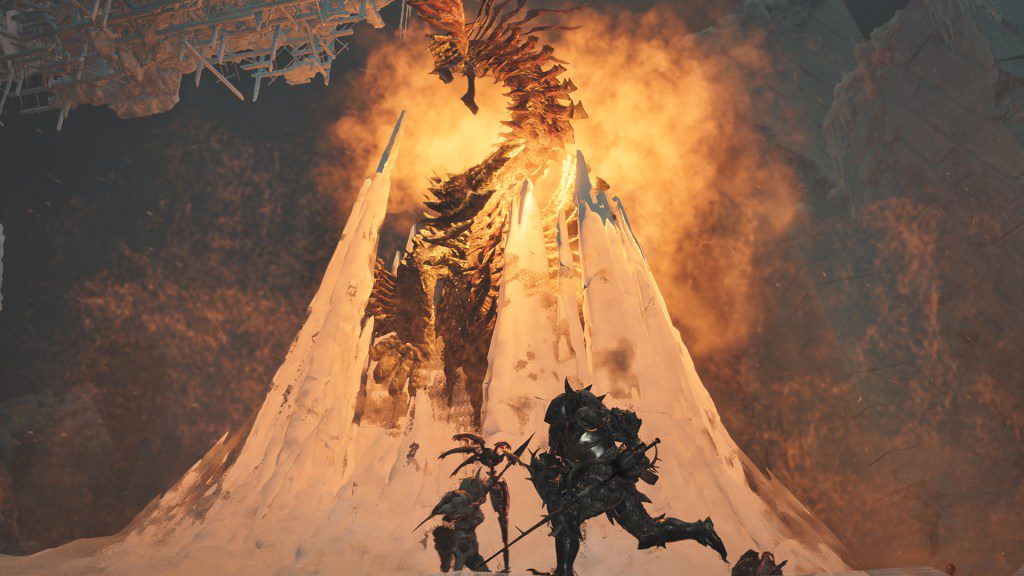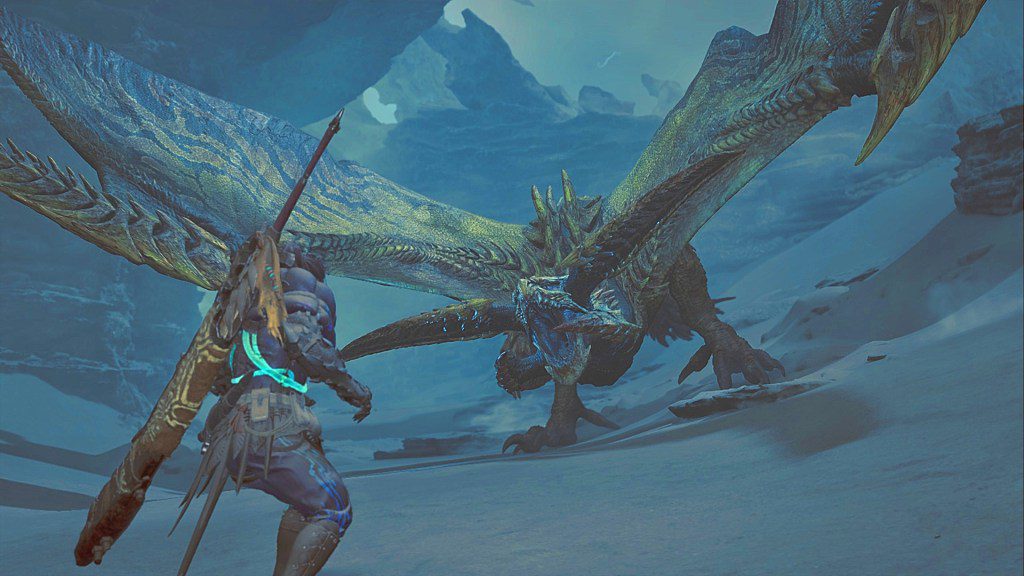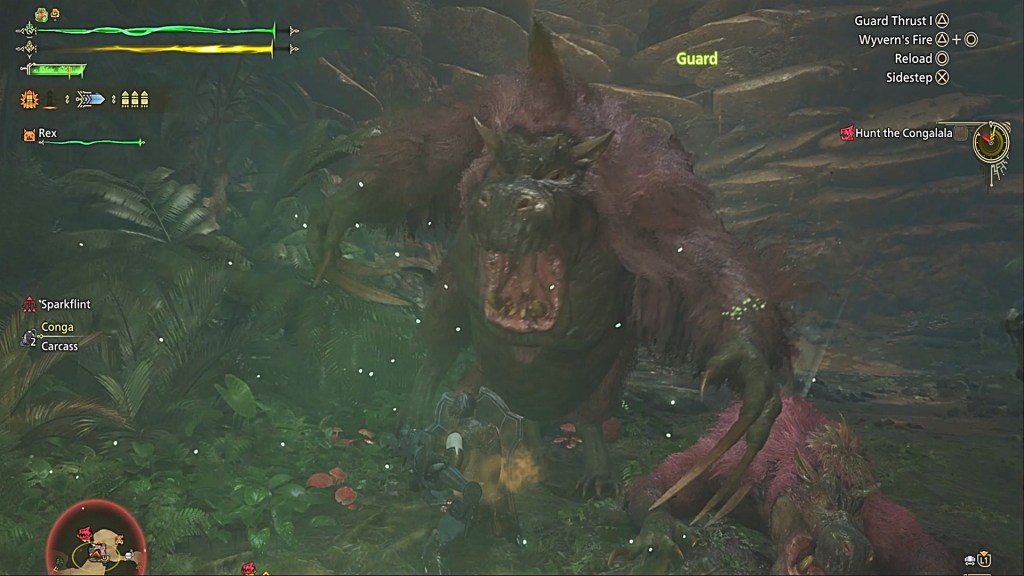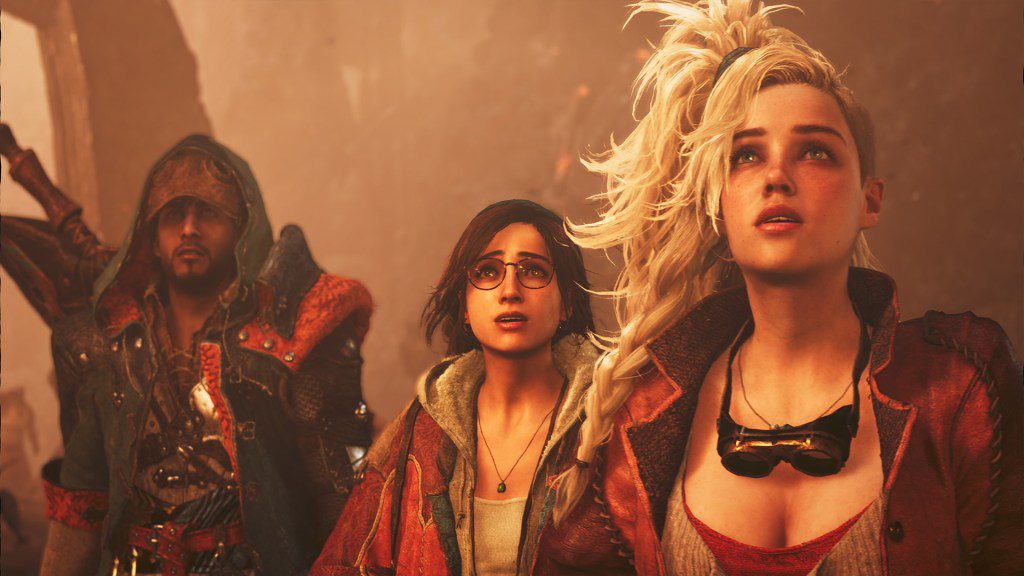‘Monster Hunter Wilds’ Is A Colossally Fun Game Whose World Could Be Better
Monster Hunter is a series whose name explains it all. In each of the more than two dozen games in the franchise, you hunt monsters. A lot. Then you craft better armor and weapons from the pieces of hunted monsters — a process that’s less grisly than it sounds — to hunt stronger monsters, repeating the cycle ad nauseam. That’s the gist of it, and for diehard fans, it’s more than enough.
The series is a perennial favorite in Japan, though it struggled to find a devout international audience until 2018’s Monster Hunter: World. Truthfully, Capcom did little to alter the actual formula or gameplay loop in World, but it did manage to create a vibrant environment that looked better and felt more alive than the series’ crunchier entries on older consoles and handheld devices. A massive hit, Worlds set a new standard for the brand and became one of Capcom’s best-selling games ever. The series then went back to portable platforms with 2021’s Monster Hunter Rise, which prioritized speed, cooperation, and smaller maps over World‘s exploration and visual splendor.
Monster Hunter Wilds (out Feb. 28) is Capcom’s latest, and even though it keeps some of Rise‘s improvements, it’s largely a Monster Hunter World successor that plays like a safe sequel, a hybrid of the best existing ideas more than any substantial evolution. It doesn’t live up to Capcom’s promises of an exciting, living world where nature plays an influential role in your hunts, so those with sky high expectations may be disappointed. But it’s still a damn good Monster Hunter game.
A brave-ish new world
Monster Hunter Wilds follows a squad of hunters sent to explore The Forbidden Lands, the series’ term for a continent that folks previously thought was mostly bereft of human life. It turns out a lot of humans live there, and one of them needs help. The story opens with a small boy named Nata fleeing a horrible monster with his tribe and getting picked up by a group of explorers. Fast forward a few years, and the group heads back to The Forbidden Lands to find Nata’s tribe and get him some closure.
Monster Hunter stories typically serve as loose justification for whatever the gameplay or mission will be and serve a minor role, but Wilds is loaded with cutscenes, interludes, and optional chances to speak with teammates to learn more about them. Traveling to new regions comes with insight into the regional ecosystem and the culture of people who try to maintain its balance.
The game’s story is still one-note, but does enough heavy lifting to justify the action.
Capcom
The story’s not necessarily bad. Monster Hunter Wilds has the spirit of a shallow-but-fun action movie and some exceptional scene direction, particularly ones that introduce new monsters. Putting these kinds of RPG-style storytelling components in a game that’s still mostly about hitting monsters with big dumb swords might seem unnecessary from a gameplay perspective, but it suits Capcom’s narrative ambitions well enough.
The beast that destroyed Nata’s village poses a threat to the natural world, though that’s not entirely unusual for Monster Hunter. Most of the series’ biggest creatures are only “bad” when they’re acting in a way that might upend balance in the ecosystem. What’s different this time is how Wilds‘ main antagonist, the White Wraith, behaves. It absorbs energy from creatures and life around it, exploiting the natural world for its own advantage. There’s an obvious parallel between the White Wraith and how humans abuse resources in real life, and in every part of the main story it’s made clear how this imbalance harms the people, wildlife, and environment as cycles and resources that people relied on for centuries suddenly vanish or suffer drastic changes.
Nature plays a less important role outside the main story. Since its initial reveal, Capcom has billed Wilds as a game where nature mattered as more than just a narrative device. The Forbidden Lands and its changing ecosystem would influence how hunts progressed, as monsters had different behavior patterns under certain weather conditions. If that’s true, Capcom evidently made these differences too subtle to easily notice. A rainy day monster behaves much the same as a fair weather one, and the only time they are more aggressive or use different attacks is when you take them on for higher-difficulty quests.

It’s really all about the monsters and hard-fought battles to take down each behemoth.
Capcom
Their behavior outside of battle is much the same as in previous games as well. Large monsters stick to a few specific areas for the most part, and smaller ones don’t notice them at all. A Quematrice — Monster Hunter Wilds‘ fire-spewing, chicken-headed dinosaur — routinely walked among a herd of herbivores, which should be its prey, without any incident. Sand leviathans slither by minding their own business. It’s all very peaceful for a land inhabited by terrifying, world-ending behemoths.
To be fair, there’s a small handful of scenarios where the environment actually does play an important role. In desert regions, fighting for more than a few seconds in the same spot creates a little hole in the sand that deepens over time, and the same is true for the monsters. Moving around in these divots is tough, and it’s easy to end up accidentally stuck while the opponents have the high ground. These moments can be exciting, ratcheting up the tension of an encounter as natural forces and world physics impact the flow of the game.
Other times, the impact is moot. High water levels can slow player movement during rainstorms in the forest, but it can be easily circumvented by using dodge rolls to traverse around quickly. One area is filled with oil deposits that should be a flammable hazard, but only some of them can be ignited — they’re easy to ignore. Some rockier locations even have overhangs that can be dramatically collapsed onto a passing monster, but none of it is essential. They’re fine inclusions, but hardly game-altering or woven into the mechanics in any way other than being cool little things you can do.

The terrain can play a role in hunts, but the systems aren’t as fully fleshed out as you’d hope.
Capcom
It feels like Capcom wanted to make the Monster Hunter formula more flexible, to go beyond just using your weapons in a hunt, but never fully committed to it. The free updates and later, paid expansions Capcom always puts out for Monster Hunter often build on the base game’s strong points and more half-baked ideas; the same will likely be true for Wilds. However, these features were supposed to be an important part of Wilds‘ identity and should’ve been more fully developed from the start.
Monster mash
Monster Hunter Wilds‘ selection of critters is among the series’ best, with fantastic variety even in early, low-rank hunts. There’s a ballerina spider that paralyzes, an armored frog who looks strangely cuddly, despite wanting to kill you with its tongue — and a personal favorite, a giant pink monkey who murders with farts and, when provoked, does a little poop in his cupped tail and throws it.
These are just some of the monsters you’ll see in the first few hours. They get bigger and deadlier as the game progresses, and even previously dull fights like the Quematrice or the Lala Barina paralysis spider become more complex in high-rank hunt quests. Best of all, though, is that Capcom finally stopped its trend of loading a Monster Hunter‘s back half with predictable battles.

The pacing and diversification of monster types is better than ever.
Capcom
Typically, once you reach the story’s halfway point in previous games, each main quest’s hunt starts to incorporate a dragon of some kind or a mutant version of a recognizable animal. Monster Hunter Wilds still has plenty of dragons, but they’re spaced out in a way that makes these encounters more interesting. For every Rey Dau — a fast-moving dragon that turns its head into a lightning-shooting laser beam — you get something like the inflatable poison bird Rompopolo or the cobra-like ice leviathan, Hirabami.
It helps that Wilds also varies its quest structure more than any other game in the series. Chapters are split between mandatory hunts, optional ones, and smaller side quests as usual, but you’ll occasionally get an unexpected assignment that opens up a new area under challenging circumstances with a fresh and deadly opponent. It’s the kind of thing that would normally serve as an end-of-chapter boss fight, but Wilds peppers its chapters with spectacular show-stopper battles that benefit as much from expert staging as they do from impressively modern graphics.
The first chapter, for example, ends with a battle like something out of King Kong, centered on hunting down a massive bear in a lightning-infused sandstorm while the creature itself is also fighting off several giant sand worms. These spectacle-filled moments are designed purely to impress, and they do, even if the actual action is unchanged from most other hunts.

Sometimes monsters will end up in dynamic multi-assailant fights, but the feature is somewhat rare.
Capcom
The actual process of hunting monsters is much the same in Wilds as in previous games, though Capcom did rebalance some weapons and introduce a few alterations to how they work. Weapons such as the Dual Blades are pretty much the same as before, but the hammer comes with a useful sidestep feature that retains your charge level while you dodge. Bows are now much less boring to use, and the lance and “gunlance” are more versatile, providing more combo options outside of endlessly guarding and following up with a single high-powered attack.
Capcom seems to have focused on buffing the series’ least exciting weapons over adding new ways to use every weapon, and it’s a smart choice that makes mostly familiar gameplay feel fresher than it should.
The biggest change in combat comes from wounds, which monsters develop after repeatedly taking damage in the same spot. Players can use a new aiming mode and focus attack to target these gashes to deal heavy damage. It sounds basic, but targeting wounds makes for a dynamic and refreshing break in the otherwise repetitive combat, and creates new opportunities for combos while rewarding you with bonus monster parts in the process (which can also be used to make clothes faster).

Grotesque beasts leave behind parts that make for oddly fashionable outfits.
Capcom
Monster Hunter is as much about fashion as it is about hunting beasts, and Wilds also has some of the series’ best fits. You can use that ballerina spider’s bits to make a cavalier-inspired set trimmed with roses. Outfits from Rompopolo, the inflatable poison bird, look like a mix of balloon animals and gothic flair, with a plague doctor’s mask as a helmet for good measure. There’s also the usual fare: the knightly armor, bone gear, and massive, completely illogical fixtures of clothing that would be physically impossible to wear or move around with in the real world. Wilds also lets players pick between masculine and feminine styles regardless of their hunter’s body type, which is a first and a welcome, overdue change.
One step back
Equally as welcome is the fact that Wilds makes your starting armor and some of the more basic sets viable for a long time. Normally, Monster Hunter‘s default gear or the items that can be crafted with materials found outside of major hunts will lose usefulness as you progress through the story. Here, base gear has greater longevity, reducing some of the series’ grind and making it easier to focus on whatever you want without feeling overwhelmed by the prospect of hunting two dozen chickensaurs just to get some fire-resistant armor.
Getting the best equipment still requires repeatedly hunting specific monsters several times, but it feels less onerous than usual thanks to how smooth Wilds’ moment-to-moment gameplay is. Wilds might not have the speed of Monster Hunter Rise, but it does adapt the latter’s fluidity of movement, so traveling around the world and even aiming your attacks feels less like a chore than in older Monster Hunter games. Starting a quest is almost seamless; track a monster on the in-game map and players can kick-off the hunt without having to return to camp first as in previous entries.

Palico companions are customizable NPCs that are adorably primed for battle.
Capcom
Wilds also adapts some of Monster Hunter Rise‘s approachability improvements with player companions. You can take a Palico — a talking cat warrior — into battle as a CPU-controlled helper who attacks monsters and heals; or they can be left behind for a stepper challenge. The Seikret, a raptor-like bird mount, can be used to escape from monsters, move across the map with haste, and even carry a second weapon kit to swap to mid-battle.
Even with all these improvements, Capcom still hasn’t figured out how to put a decent tutorial in Monster Hunter. There are slews of pop-ups about making a field camp or using status-cleansing items and absolutely no explanation for how to use some of the tools in your pack or even how to change ammo for your sling.
Weapon guides are confined to the training grounds, which provide a list of basic combos and little help figuring out more advanced moves. Sticking to the series’ traditional hands-off attitude toward helping new players is an odd choice, especially at a point when the audience is rapidly growing. Rise already showed that Capcom can make an approachable Monster Hunter without compromising the series’ identity, and Wilds could’ve gone further to create a modernized experience without sacrificing the quirks that define the franchise.
Still, despite its unevenness, a general lack of innovation, and the stubborn refusal to properly onboard new players, Wilds feels like the best Monster Hunter yet. It doesn’t quite live up to everything Capcom promised — it’s hardly a living, breathing Planet Earth-like experience — but with smart new systems and quieter features that improve quality of life, it’s an engrossing action jaunt that’s easy to get lost in for dozens of hours. Once again, the hunt is on.
Monster Hunter Wilds launches on Feb. 28 for PlayStation 5, Xbox Series X|S, and Windows PC.





